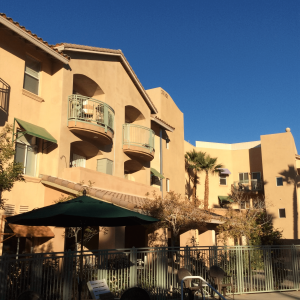Groundbreaking Financing for Energy Upgrades in Affordable Housing: The “Pay from Savings” Approach

How do affordable housing organizations lower operating costs while keeping tenants comfortable? The obvious solution: upgrade buildings to use less energy and water and deliver better comfort. But it’s not so easy to secure funds to pay for efficiency upgrades. Even with incentive funds that are available from utilities and the government, owners have to get creative. With the “Pay from Savings” financing model, owners can complete efficiency improvements when they are needed most, rather than waiting for refinancing or taking out a secondary loan.
Mercy Housing: A Case Study
In 2016, Mercy Housing, one of the largest affordable housing nonprofits in the country, sought out assistance in upgrading its California portfolio of nearly 100 properties and 6,500 units.
As Mercy Housing’s energy and water management partner, Bright Power first used EnergyScoreCards, our cloud-based energy analysis and benchmarking platform, to understand areas of waste and underperformance. Then, we completed comprehensive onsite energy audits to identify the best opportunities for improvement. Mercy Housing, Affordable Community Energy Services Company (ACE), and Bright Power prioritized phases of work based on factors including building performance, location, and available government and utility incentive programs like California’s Low Income Weatherization Program (LIWP). The first phase, which consists of six Mercy California properties, wrapped up the installation at the end of 2017.
The three organizations partnered on an innovative “pay from savings” financing approach, which gives Mercy Housing the ability to complete the upgrades and use project savings to pay for the upgrades over a 10-year period. In order to help finance the upfront cost of these projects, ACE recently secured funding through the Reinvestment Fund.
To ensure project returns, Bright Power will actively track and verify savings through EnergyScoreCards and engage with site staff to help optimize operations and maintenance. The efficiency upgrades being deployed across Mercy Housing’s California portfolio include new LED lighting in common areas and resident apartments, innovative heat pump hot water heating systems, low-flow fixtures on faucets and showerheads, domestic hot water controls, and pipe insulation.
Pay from Savings
ACE’s “pay from savings” approach is groundbreaking because it allows owners, like Mercy Housing, to take the savings generated from their energy and water efficiency upgrades and use them to pay for the upgrades over the next 10 years. That means while Mercy Housing is conducting business as usual, their efficiency upgrades will be paying for themselves.
Paying for the project in this way requires careful tracking of the energy and water savings pre- and post-retrofit. Bright Power’s EnergyScoreCards breaks down consumption and spend by end use to allow Bright Power, ACE, and Mercy Housing to monitor savings at the building and portfolio level. This rigorous monitoring was an important factor in securing the “pay from savings” financing for these projects.
Like all EnergyScoreCards clients, Mercy Housing is paired with a dedicated Energy Analyst to monitor their savings. Caleb Smeeth, Bright Power’s Energy Analyst for Mercy Housing said, “I pay close attention to the monthly performance of each project to ensure savings are consistently achieved. If the data begins to trend in a different direction, Bright Power has a hands-on approach to engage with the site staff to diagnose the issue remotely and deploy our California team for additional on-the-ground insights.”
Beyond tracking savings for financing purposes, Mercy Housing can also use this information to see which measures make the greatest impact. This allows Mercy Housing, Bright Power, ACE, and the Reinvestment Fund to forecast projects that will yield strong energy savings and maximize tenant comfort.
The Results from Phase I (6 Properties)
In just four months at 6 properties, Mercy Housing has seen:
- 29% decrease in gas usage
- 9% decrease in electric usage
- 4% decrease in water usage
- 7% decrease in carbon emissions
After Mercy Housing expands these upgrades to nearly 100 properties—representing the majority of their California portfolio—they will see impressive estimated annual consumption reduction:
- 2.1 million kWh electricity – equivalent to 234 homes’ annual electricity use
- 23,000 therms natural gas – equivalent to driving across the US over 111 times
- 32 million gallons of water – equivalent to over 48 Olympic sized swimming pools
“Combining the LIWP incentives with the ACE ‘Pay from Savings’ offering, we were able to achieve deep levels of retrofit at these properties in a way we could not have otherwise done. We hope to replicate this approach with more California incentive programs at other properties in our portfolio,” says Caitlin Rood, Mercy Housing’s Environmental Sustainability Director. “It’s a model in which everyone wins—investors, subsidized housing owners, ACE and its partners, and, ultimately, our residents.”
With a model like this, affordable housing organizations can secure funding to meet the needs of their residents, improve tenant comfort, and reduce their carbon footprint. Caitlin couldn’t be more right—everyone wins.
For more information on Affordable Community Energy Services Company (ACE), visit affordablecommunityenergyservices.com
For more information on Mercy Housing, visit mercyhousingblog.org
For more information on Reinvestment Fund, visit reinvestment.com